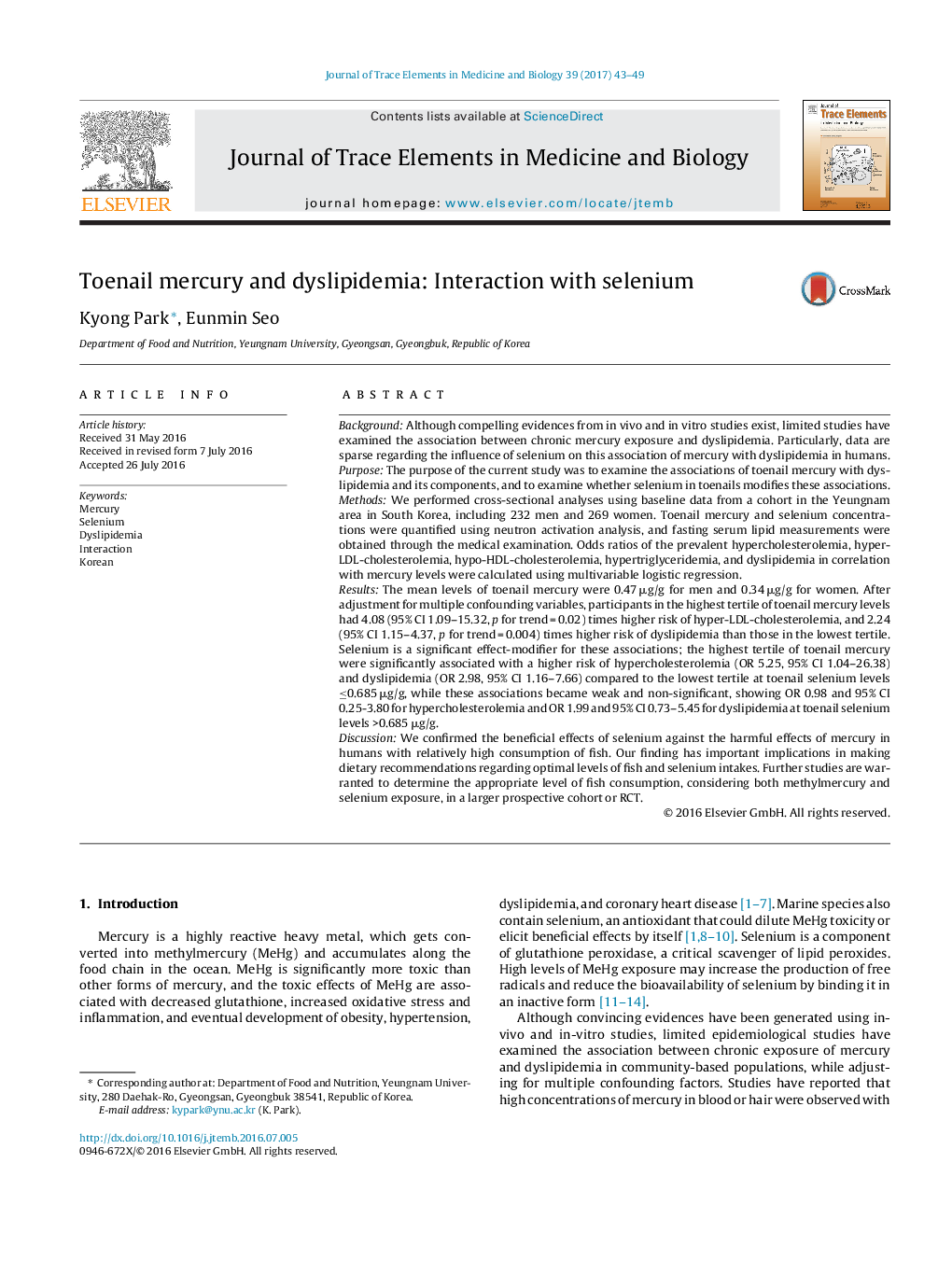| کد مقاله | کد نشریه | سال انتشار | مقاله انگلیسی | نسخه تمام متن |
|---|---|---|---|---|
| 1226327 | 1494817 | 2017 | 7 صفحه PDF | دانلود رایگان |
BackgroundAlthough compelling evidences from in vivo and in vitro studies exist, limited studies have examined the association between chronic mercury exposure and dyslipidemia. Particularly, data are sparse regarding the influence of selenium on this association of mercury with dyslipidemia in humans.PurposeThe purpose of the current study was to examine the associations of toenail mercury with dyslipidemia and its components, and to examine whether selenium in toenails modifies these associations.MethodsWe performed cross-sectional analyses using baseline data from a cohort in the Yeungnam area in South Korea, including 232 men and 269 women. Toenail mercury and selenium concentrations were quantified using neutron activation analysis, and fasting serum lipid measurements were obtained through the medical examination. Odds ratios of the prevalent hypercholesterolemia, hyper-LDL-cholesterolemia, hypo-HDL-cholesterolemia, hypertriglyceridemia, and dyslipidemia in correlation with mercury levels were calculated using multivariable logistic regression.ResultsThe mean levels of toenail mercury were 0.47 μg/g for men and 0.34 μg/g for women. After adjustment for multiple confounding variables, participants in the highest tertile of toenail mercury levels had 4.08 (95% CI 1.09–15.32, p for trend = 0.02) times higher risk of hyper-LDL-cholesterolemia, and 2.24 (95% CI 1.15–4.37, p for trend = 0.004) times higher risk of dyslipidemia than those in the lowest tertile. Selenium is a significant effect-modifier for these associations; the highest tertile of toenail mercury were significantly associated with a higher risk of hypercholesterolemia (OR 5.25, 95% CI 1.04–26.38) and dyslipidemia (OR 2.98, 95% CI 1.16–7.66) compared to the lowest tertile at toenail selenium levels ≤0.685 μg/g, while these associations became weak and non-significant, showing OR 0.98 and 95% CI 0.25-3.80 for hypercholesterolemia and OR 1.99 and 95% CI 0.73–5.45 for dyslipidemia at toenail selenium levels >0.685 μg/g.DiscussionWe confirmed the beneficial effects of selenium against the harmful effects of mercury in humans with relatively high consumption of fish. Our finding has important implications in making dietary recommendations regarding optimal levels of fish and selenium intakes. Further studies are warranted to determine the appropriate level of fish consumption, considering both methylmercury and selenium exposure, in a larger prospective cohort or RCT.
Journal: Journal of Trace Elements in Medicine and Biology - Volume 39, January 2017, Pages 43–49
